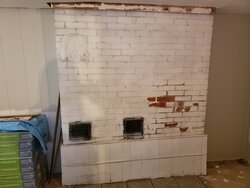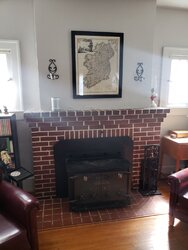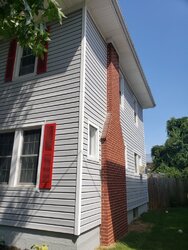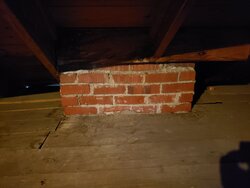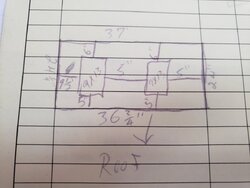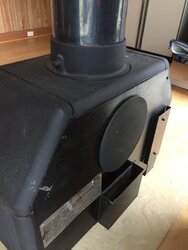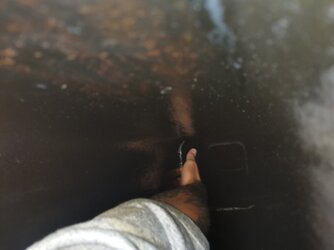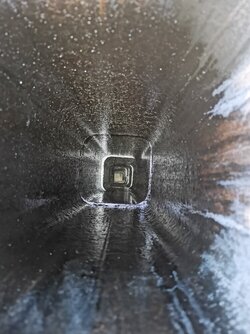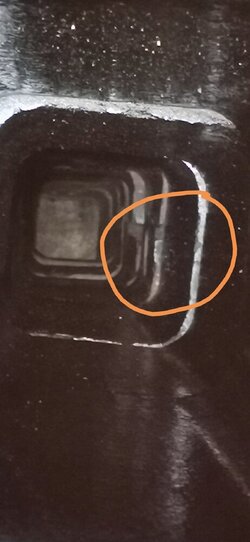Apologies for the lengthy thread. My wife and I just bought a home in June. It was built in 1940 and is two stories. There is a chimney with two flues. One goes to a fireplace, that now has an insert, in the main living area. The other flue goes to the basement. I know the previous owner or occupant was using the fireplace insert because there was still wood in there, and there is wood and kindling on the porch. We just had a cleaning and inspection today by our local chimney/fireplace/etc company.
He showed me pictures that he took from up top, looking down the flues. There are gaps in the flues between the clay liner sections where the mortar has fallen out. There isn't a cap on either flue at the moment, so water gets in there I'm sure, causing the mortar to deteriorate. They recommended that we have them install a stainless liner, and of course we would need a new fireplace insert because they wouldn't be able to connect the liner to this one. Installing the liner will cost about $2,000, but would be more if they cannot slide it in and have to bust out the porcelain. Also, I'd have to buy a new insert or whatnot. He said it wasn't so much of a problem with creosote building up but an ember getting into one of those cracks and causing a fire.
I feel like they have to issue this recommendation for liability purposes. I asked him how many chimney that he inspects in this town that have this same problem and he said basically all of them. I don't think they're being scammy, but I do feel like I would be alright to burn without installing a new liner. Of course I'm not an expert, and they are. My chimney is on a side wall of the house, and it is inset a bit if that makes sense. I can tell that the wall in front of the chimney in the house is not mortar. It is solid to hit. In my mind, I really don't see these gaps between flue pieces being a big deal. Those flue pieces are surrounded likely by concrete and brick. From what I can see in the attic and outside, the bricks and mortar are in good shape.
I guess my question is such: what is everyone's thoughts about gaps in the flue? There isn't cracking, just gaps in between. This is my first post but I've read this forum before. Thank you.
He showed me pictures that he took from up top, looking down the flues. There are gaps in the flues between the clay liner sections where the mortar has fallen out. There isn't a cap on either flue at the moment, so water gets in there I'm sure, causing the mortar to deteriorate. They recommended that we have them install a stainless liner, and of course we would need a new fireplace insert because they wouldn't be able to connect the liner to this one. Installing the liner will cost about $2,000, but would be more if they cannot slide it in and have to bust out the porcelain. Also, I'd have to buy a new insert or whatnot. He said it wasn't so much of a problem with creosote building up but an ember getting into one of those cracks and causing a fire.
I feel like they have to issue this recommendation for liability purposes. I asked him how many chimney that he inspects in this town that have this same problem and he said basically all of them. I don't think they're being scammy, but I do feel like I would be alright to burn without installing a new liner. Of course I'm not an expert, and they are. My chimney is on a side wall of the house, and it is inset a bit if that makes sense. I can tell that the wall in front of the chimney in the house is not mortar. It is solid to hit. In my mind, I really don't see these gaps between flue pieces being a big deal. Those flue pieces are surrounded likely by concrete and brick. From what I can see in the attic and outside, the bricks and mortar are in good shape.
I guess my question is such: what is everyone's thoughts about gaps in the flue? There isn't cracking, just gaps in between. This is my first post but I've read this forum before. Thank you.


